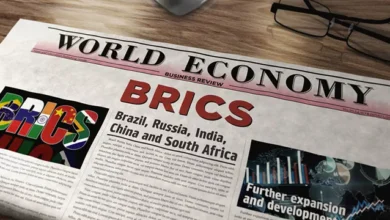Analyzing the Muted Volatility in G7 Markets

In a world bristling with geopolitical uncertainties, elections with global implications, and divergent economic trajectories within the G7 nations, one would expect the currency markets to be a hotbed of volatility. Contrary to these expectations, major currency pairs have displayed a surprising tranquility, with volatility indices plumbing depths unseen since before the tumult of the Russia-Ukraine conflict two years ago. This article delves into the factors contributing to this serene landscape in the currency markets, drawing from recent analyses and market indices.
Unraveling the Paradox of Calm
Recent data from Deutsche Bank’s currency VIX index and the CME Group’s G5 currency volatility index highlight a dramatic decrease in implied volatility, reaching levels reminiscent of the pre-pandemic era. Despite the backdrop of potential landmark elections in the U.S. and Britain, alongside the Bank of Japan’s tweaking of interest rates, the markets seem to be in a state of unexpected equanimity. This phenomenon raises the question: Why is there a diminished appetite for hedging or speculating on currency movements in such turbulent times?
Several factors offer explanations for this subdued volatility. Firstly, a growing ‘home bias’ among investors is noted, possibly as a response to the unpredictable global landscape. Additionally, a shift in corporate strategies towards ‘re-shoring’âbringing production and manufacturing back to domestic soilsâcould be diminishing the need for currency risk mitigation. Furthermore, with the dollar maintaining historically high valuations and major central banks like the Federal Reserve, European Central Bank, and Bank of England aligning their expected rate cuts and terminal rates, the opportunities for exploiting interest rate differentials in currency trades seem to be narrowing.
Central Bank Policies and Market Sentiment
The role of central banks in shaping currency volatility cannot be overstated. The Bank of Japan, in particular, has been in the spotlight with its interest rate decisions following an unexpected surge in inflation. Market reactions to these policy adjustments have been closely monitored, with significant attention paid to the positioning of large hedge funds and money managers in the forex market. Despite these developments, the anticipated shifts in market expectations have not materialized to the extent predicted, suggesting a complex interplay of factors at work behind the scenes.
Insights from the referenced articles on Japanese inflation and market dynamics indicate a cautious stance among investors. The stabilization of the yen against the dollar and other major currencies, despite Japan’s inflation surpassing forecasts, points towards a nuanced understanding of central bank policies and their potential impacts on currency markets.
Looking Ahead: Anticipating Future Movements
As the world edges closer to resolving some of its current geopolitical and economic uncertainties, the big question for currency markets is whether this period of calm is a harbinger of a new norm or the calm before the storm. With the dollar’s position seemingly secure for the moment, much will depend on the clarity that emerges from economic directions and election outcomes in the months ahead.
The juxtaposition of high valuations, matched terminal rates, and a potential shift in investor strategies could redefine traditional volatility triggers in the currency markets. As investors and corporations alike adapt to a changing world, the dynamics of currency volatility may well be undergoing a fundamental transformation, challenging long-held assumptions about risk, opportunity, and market behavior in the face of global upheavals.





